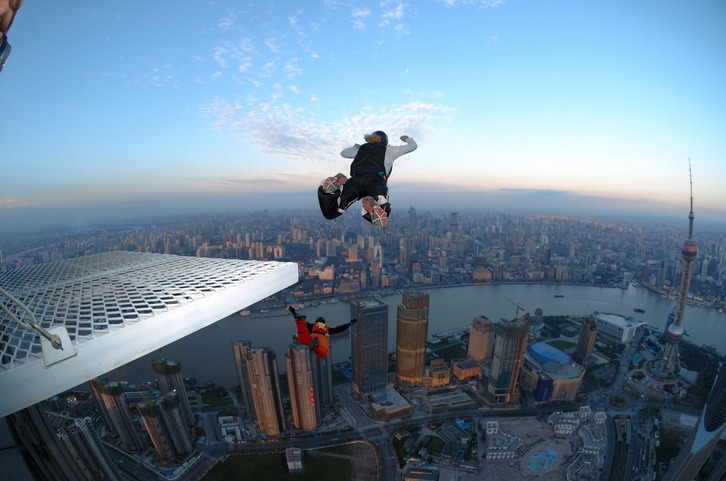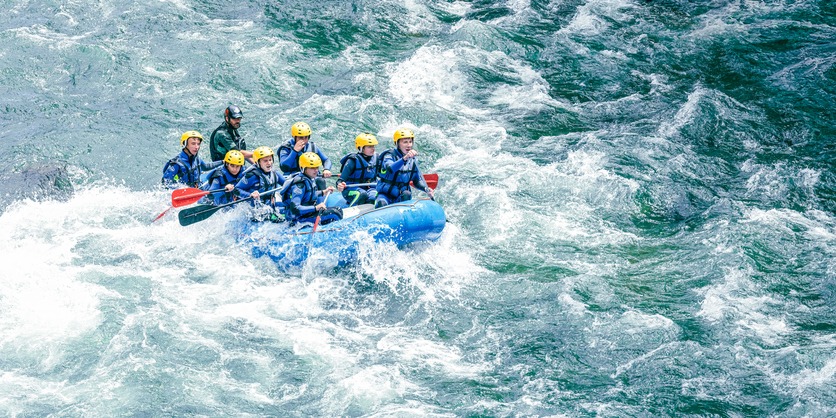The Most Popular Extreme Sports in the World

Adrenaline seekers around the world are drawn to extreme sports for their thrills and challenges. These activities push the limits of human endurance and skill, attracting those who crave excitement beyond the ordinary. This article looks at some of the most popular extreme sports and what makes them so appealing to enthusiasts everywhere.
Skydiving
Skydiving is one of the most exhilarating extreme sports. It dates back to the late 18th century when the first recorded parachute jump was made by André-Jacques Garnerin in 1797. The sport has since evolved, with modern skydiving becoming widely recognized after the 1950s when it gained popularity in the United States. Events like the World Skydiving Championships have brought together enthusiasts from around the globe.
Skydiving involves jumping from an aircraft at high altitudes, usually between 10,000 and 15,000 feet. The freefall lasts for about 60 seconds before the parachute is deployed, allowing the diver to glide safely to the ground. This sport requires both physical and mental preparation, with training and certification necessary for those who wish to dive solo.
Notable events include the annual Red Bull Skydive Team exhibitions, where professional skydivers perform daring stunts and formations.
Snowboarding

Snowboarding has become one of the most popular winter sports in the world. It was developed in the United States during the 1960s and 1970s, gaining recognition as an Olympic sport in 1998 at the Nagano Winter Olympics. Names like Shaun White and Chloe Kim have become synonymous with snowboarding.
The sport involves descending a snow-covered slope on a snowboard, which is a flat board attached to the rider's feet. Snowboarding combines elements of surfing, skateboarding, and skiing, making it appealing to those who enjoy high-speed sports. Various disciplines like half-pipe, slopestyle, and big air add to its diversity.
Major snowboarding events include the X Games and the Winter Olympics, where athletes showcase their skills on international stages. Snowboarding has grown from a fringe activity into a mainstream sport.
Surfing

Surfing is one of the oldest extreme sports, with origins tracing back to ancient Polynesia. The modern era of surfing began in the early 20th century when Duke Kahanamoku, a Hawaiian swimmer and surfer, popularized the sport in California and Australia. By the 1950s, surfing had become a cultural phenomenon, particularly in the United States.
The sport involves riding ocean waves on a surfboard, with surfers aiming to stay on the wave as long as possible. Surfing requires a combination of balance, strength, and timing, making it a challenging and rewarding activity. Various styles, such as longboarding and shortboarding, offer different experiences for surfers.
Prominent surfing competitions include the World Surf League's Championship Tour, where the best surfers from around the world compete for the title of World Champion. Surfing's inclusion in the 2020 Tokyo Olympics further solidified its status as a premier extreme sport.
Rock Climbing

Rock climbing has grown from a niche activity to a popular extreme sport. It started gaining traction in the late 19th century, with early climbers like George Mallory and Edmund Hillary setting the stage for future adventurers. The sport saw significant growth in the 1980s and 1990s with the development of climbing gyms and international competitions.
Rock climbing involves ascending natural rock formations or artificial rock walls, with climbers using their hands and feet to make their way up. The sport requires a combination of strength, endurance, and problem-solving skills. There are different types of climbing, including bouldering, sport climbing, and traditional climbing.
Major events like the IFSC Climbing World Championships and the inclusion of sport climbing in the 2020 Tokyo Olympics have brought rock climbing into the mainstream. The sport continues to attract those who seek both physical and mental challenges.
BASE Jumping

BASE jumping is one of the most dangerous and thrilling extreme sports. The term BASE stands for Building, Antenna, Span, and Earth, which are the four types of fixed objects from which participants jump. BASE jumping has its roots in skydiving, with Carl Boenish, a filmmaker and skydiver, being credited as the pioneer of modern BASE jumping in the late 1970s.
The sport involves jumping from a fixed object and freefalling before deploying a parachute. Unlike skydiving, BASE jumping typically involves much lower altitudes, which leaves little room for error. This makes it a high-risk activity, with many jumpers taking extreme precautions to ensure their safety.
Notable BASE jumping events include the annual Bridge Day in West Virginia, where hundreds of jumpers leap from the New River Gorge Bridge. Despite its dangers, BASE jumping continues to attract a small but dedicated group of thrill-seekers.
Parkour

Parkour is a discipline that involves moving through environments by running, jumping, and climbing, often using urban landscapes as a playground. It originated in France in the late 1980s and was developed by David Belle and his friends. Parkour became widely recognized in the early 2000s, thanks in part to videos shared online and its depiction in films and advertisements.
Participants, known as traceurs, aim to move from one point to another as efficiently as possible, overcoming obstacles in their path. The sport requires agility, strength, and creativity, with each traceur developing their own style. Parkour has no formal competitions, as it focuses more on self-improvement and personal challenges.
Events like the annual Rendezvous gathering in Lisses, France, bring together parkour enthusiasts from around the world. Parkour has influenced other forms of movement, such as freerunning, and continues to inspire people to view their surroundings in a new way.
BMX Racing

BMX racing is a high-speed sport that originated in the United States in the late 1960s. It began as a way for young cyclists to mimic motocross riders, and by 1977, the American Bicycle Association (ABA) was founded to organize and regulate the sport. BMX racing was officially included in the 2008 Olympics during the Beijing Summer Games.
The sport involves racing specialized bikes on dirt tracks with jumps, tight turns, and obstacles. Riders compete in short sprints, making it an intense and fast-paced sport. BMX racing requires a combination of speed, agility, and technical skills, with athletes often starting at a young age.
Major events include the UCI BMX World Championships and the Olympic Games, where riders compete for the title of world champion. BMX racing has grown into a global sport, with thriving communities in countries around the world.
Freestyle Motocross

Freestyle motocross (FMX) is an extreme sport that showcases the skill and bravery of motocross riders. It emerged in the late 1990s as riders began performing tricks during motocross races. The sport quickly gained popularity, with the first official FMX competition, the Red Bull X-Fighters, held in 2001.
In FMX, riders perform acrobatic stunts while airborne, often launching their bikes off large ramps. Tricks include flips, spins, and other maneuvers that require precise control and timing. Riders are judged based on the difficulty and execution of their tricks.
The X Games have become the premier event for FMX, where the best riders in the world compete for medals and recognition. The sport's mix of danger and artistry continues to draw large crowds and inspire new generations of riders.
Wingsuit Flying

Wingsuit flying is one of the most visually striking extreme sports. It evolved from skydiving and BASE jumping. The first modern wingsuit was developed in the late 1990s by Patrick de Gayardon, a French skydiver. The sport gained wider attention in the 2000s, with videos of wingsuit flights going viral online.
Wingsuit flying involves wearing a specially designed suit that adds surface area to the body, allowing the jumper to glide through the air. The wingsuit's design creates lift, enabling the jumper to travel horizontally at high speeds before deploying a parachute for landing. This sport requires a high level of skill and experience, as even minor mistakes can be fatal.
Major wingsuit events include the World Wingsuit League, where top flyers compete in speed and distance challenges. The sport's popularity continues to grow as more experienced skydivers seek to push the boundaries of human flight.
Whitewater Rafting

Whitewater rafting is a thrilling water sport that involves navigating a river's rapids in an inflatable raft. The modern form of whitewater rafting began in the mid-20th century, with the first commercial rafting trips starting in the 1950s. The Colorado River, particularly the Grand Canyon, became a popular destination for this sport.
The sport requires teamwork and skill to maneuver through the fast-flowing water and avoid obstacles like rocks and drop-offs. Rivers are classified according to the difficulty of their rapids, ranging from Class I (easiest) to Class VI (most difficult). Whitewater rafting is often done in groups, with each member playing a crucial role in steering the raft.
Notable events include the annual Gauley Fest in West Virginia, where thousands of enthusiasts gather to raft on the challenging Gauley River. The sport has become a popular activity for adventure seekers looking to experience the thrill of nature's power.
Conclusion
Extreme sports have captured the imagination of thrill-seekers around the globe. Whether it's the rush of skydiving, the challenge of rock climbing, or the adrenaline of freestyle motocross, these activities offer something for everyone who seeks adventure.




